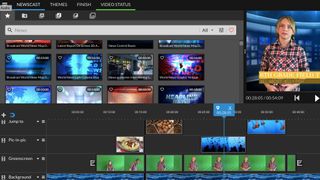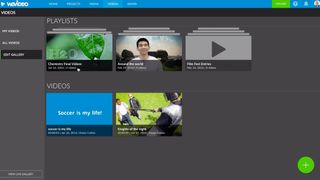WeVideo, as the name suggests, is a video platform designed to use the cloud for collaborative storage and work – hence the "we" in the name.
This tool can be used to capture, edit, and view video footage. Crucially, it is all cloud-based so it requires very little storage space or processing power – allowing it to work on most devices.
Both educators and students can use this tool as it not only teaches how to video edit, in an accessible way, but also allows students to use video as a vehicle to express ideas and submit work projects.
So is WeVideo for you? Read on to find out everything you need to know.
What is WeVideo?
WeVideo is a tool created for video capture, editing, and sharing, but we're going to specifically focus on how that applies to learning.
School focus is a heavy part of WeVideo, which aims to help students learn to video edit and for other endeavors. For example, thanks to the video capture element, this platform is great for helping student work on presenting skills and then editing it creatively.

WeVideo is web- and app-based, with all the data crunching done in the cloud, making it ideal for use in schools and on less powerful devices. It's built with a Chromebook focus, for example. The cloud-based nature of the platform allows it to be used collaboratively by students, both in class and remotely.
This platform is built for beginners and younger students, so it's simple to learn and master. Essentially, there are two modes: Storyboard and Timeline. The first is easier, ideal for getting new students into video editing, while the latter is more complex, allowing students to add in more detail and learn to video edit as they might on a professional system.
How does WeVideo work?
WeVideo is an intuitive and easy-to-use platform that uses clever tech to make it ideal for younger students who may otherwise not have the patience for editing. JumpStart tech, for example, allows students the ability to begin editing a video before it has even fully uploaded, while the upload continues in the background.
Usefully, students can start working in a simple mode and upgrade to a more complex editing style, and back again, as they need throughout the project. This allows them to explore more difficult styles of editing without feeling they have to commit to that in the long run.

WeVideo allows for the upload of video, images, and audio clips. Students can create and upload these items, using a smartphone or with the software itself. These can then be stitched together with voice-overs and text added in as needed.
Playlists and file folders can be created for easy storage of projects, which also makes it simple to share and collaborate on work. Doing multiple projects across classes is also possible with the intuitive organization in this section of the platform.
What are the best WeVideo features?
Aside from the video editing styles, there are lots of other extras included with WeVideo that make it a powerful editing tool.
Students can add motion effects and transitions to their images as well as videos. There's an option to use green screen effects for virtual backgrounds. Screencasting is also possible, which allows students to show what's happening on their screen – ideal with a voiceover if guiding us through a digital project, for example.
Audio output alone is also an option, which makes this a powerful podcasting tool too. In addition, audio editing and working with templates is available.
Themes is a quick and easy way for students to place a stylized filter on an entire video to give it a particular feel or theme to suit the content.
The use of the invite feature allows students to collaborate with others. Multiple users can then make amends and edits to the project remotely from their devices.
The help button in the top corner is a nice addition that allows students to learn what they need without going to another to ask, rather, by working it out themselves using the guidance provided within the platform.
For teachers, there are great integration features such as being able to use this from within the school LMS. It also allows for export to the likes of Google Classroom, Schoology, and Canvas.
How much does WeVideo cost?
WeVideo offers several of different price points specifically for education. This breaks down to:
- Teacher, which is charged at $89 per year and offers a single user account.
- Classroom is for up to 30 students and is charged at $299 per year.
- For grades or groups of over 30 students, pricing is per user on a quote basis.
If you need school- or district-wide accounts, with custom user and pricing options to suit any needs, this is also a quote-based price.

